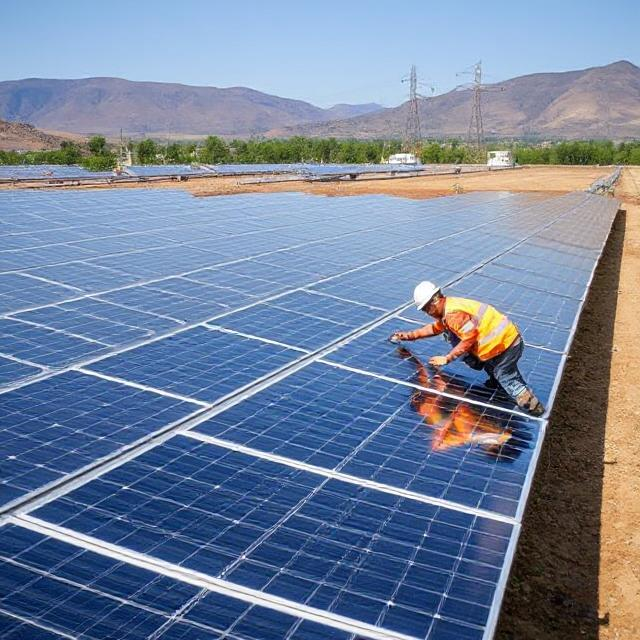Ultimate Guide to Solar Plant Installation for Duplex Houses: Costs, Advantages, Stepwise Steps
Install solar panels for your duplex house because it is among the best investments you could make, with energy costs rising and the demand for sustainability. Solar energy is indeed a cost-effective and environmental-friendly, long-term answer to your power needs. This guide will take you through costs, benefits, and step-by-step policies in solar installation for duplex houses.

Why Solar Energy for Your Home?
Solar energy has become one of the most widely and widely embraced energy alternatives because it offers numerous benefits. Below are the reasons why duplex homeowners should invest in solar power:
1. Savings in cost
Installed once, solar panels have the ability to greatly reduce your bills for electricity consumption. Now, it is possible to generate your own energy and use the net metering programs in receiving a rebate instead of depending a hundred percent on the grid.
2. Eco-Energy Source
Contrasted to fossil fuels, solar energy is not only renewable but it is also emission-less and is, therefore, environment-friendly.
3. Increases Property Value
Houses that are fitted with solar panel installations generally have higher resale values. More people are looking for energy-efficient homes that promise savings over a long period.
4. Government Incentives and Tax Benefits
Various government subsidies and incentives have been given by many governments in favor of homeowners opting for solar energy for use in homes, thus making it cost-worthy.
Understanding Solar Panel Installation Cost
Before installation, there are many things to understand about how to put solar panels. Some reasons include:
1. Price of Solar Panels
The overall cost of solar panels very much depends on the type and efficiency of panels you select. Generally, higher efficiency panels are more expensive, but they perform better.
2. Solar Inverter Cost
Solar inverters convert direct current (DC) into alternating current (AC) because the solar panels generate direct instance current. The cost of inverters varies from one inverter to another based on capacity and efficiency.
3. Storage of Batteries (Optional)
Backup backup power during outages can solve the storage need with a solar battery but increases initial costs. Ultimately, it affords the solar energy owner security in case of power outage.
4. Installing and Labor Charges
Costs of installation vary since most professional services have ensured proper installation and maximized efficiency in all the houses where they installed by doing it in an orderly fashion. Thus, it is different by the kind of structure in your home.
5. Maintenance Expenses
Though solar panels require very few maintenance activities, any occasional service and cleaning will help reach optimum performance.
How to Install Solar Power in Steps
If you are among those considering the option of solar installation to their duplex home, this is the complete guide to step by step help through this route:
Step 1: Know your energy needs The reviewed past electricity utility bills will enlighten you regarding power consumption and thus allow the determination as to how much capacity solar panels will be required to provide energy sufficient for your needs.
Step 2: Site Survey and Roof Assessment
A roof’s condition, orientation, and amount of shading will inform the solar installation crew about the optimal placement of solar panels.
Step 3: Choose a solar system based on Assessment
Based on this assessment, the best solar panels with a highly efficient inverter and all necessary components will be recommended for the installation within a household.
Step 4: Cost Calculation of Solar Panel Installation
An application needs to be made for estimates from various installers for doing a comparison of solar panel price along with added fees for installation and any needed permits.
Step 5: Obtain Permits and Approvals Different cities have different norms for solar energy installation. Your installer would take all the permits you will be needing for your installations before the actual installation is being done.
Step 6: Install Solar Panels
The installation team puts up the solar panels on your rooftop once the approvals are done for you; installs the solar inverter and does all the connections with the electric grid of your house.
Step 7: Testing and Activation
Validation and activation of the system after it is completely installed by ensuring that it meets performance expectations. Upon approval, you will generate solar energy for domestic use.
Step 8: Monitor and Maintain Your System
Such kind of monitoring will help keep track of energy production and efficiency thus helping you Identify where you lose energy and how to maximize usage. Clean the panels from time to time for maximum output.
Maximize Solar Energy Efficiency
By following the mentioned guidelines, you can make the most out of your solar power system. High-efficiency solar panels are to be installed for better performance. Optimize the condition of panels to ensure that they receive the most sunlight. Have the most efficient appliances that consider the limited energy consumption.
Last Words
Installing solar panels in a duplex home is the savviest and most sustainable investment providing long-term savings in the environment-it could also be termed as energy-independent. Learning about costing for solar energy in parts and the correct structured installation process would lead towards the effective harnessing of this power. When you are most ready to move on in using solar energy, Saur Shakti is the best specialist in consulting and developing quality solar installation services as per your demand.
Comments
Post a Comment